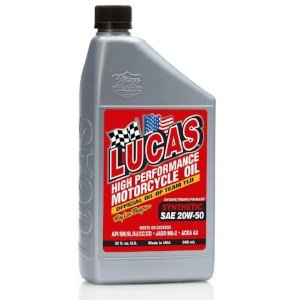10 Best Oils for Motorcycles – Buyer’s Guide for 2021
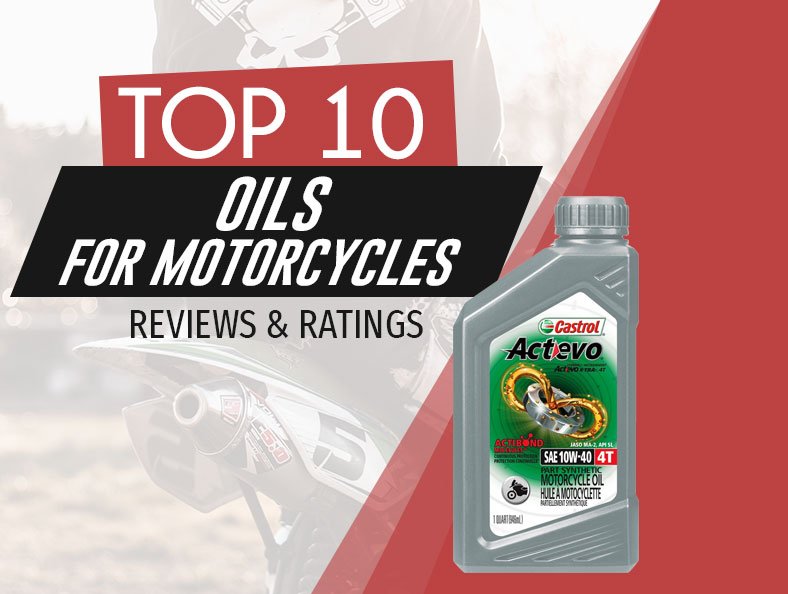
Is it already time to change the oil? Regardless of whether you’re looking for a new product or it’s your first time buying oil, you should always check out all your options.
The kind you choose will impact the bike’s longevity and overall quality of your riding experience. Also, new bikes need a different type of oil than old ones. Those that are equipped with the latest technology require lubricants that are equally as efficient.
Continue reading to find a wonderful motorcycle oil that would keep your bike running smoothly and efficiently. Below the best products, you’ll find our Buyer’s Guide to help you determine which of the mentioned ones is best for you.
10 Top-Rated Oils for Motorcycles Reviewed and Compared
| IMAGE | PRODUCT | DETAILS | |
|---|---|---|---|
 |
| View Latest Price | |
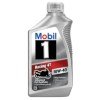 |
| View Latest Price | |
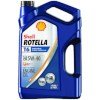 |
| View Latest Price | |
 |
| View Latest Price | |
 |
| View Latest Price | |
 |
| View Latest Price | |
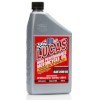 |
| View Latest Price | |
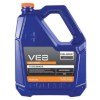 |
| View Latest Price | |
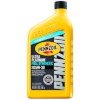 |
| View Latest Price | |
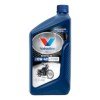 |
| View Latest Price |
Castrol 06130 Actevo 10W-40 Part Synthetic 4T
The Castrol 06130 Actevo provides such clinging action that reduces wear by 70% compared to other Castrol products. It covers the moving parts and protects them during start-up.
It also protects against high-temperature carbon deposits increasing the longevity of the engine and allowing it to retain its performance. The Actevo also provides thermal stability for better protection and burn-off at extreme temperatures.
This one is suitable for 4-stroke motors that are fuel and carburetor injected. It’s a 1-quart bottle that’s ergonomically designed to provide the ultimate ease of use. The product exceeds JASO MA-2 and API SL standards.
Castrol has been the primary lubricant used for motorsports racing. It’s been around for 120 years claiming their lubricants are liquid engineering. It’s a quality brand that produces reliable products, so you can expect their Actevo synthetic to deliver the best results.
PROS
- Lasts for 5000-8000 miles
- Allows smoother shifting
- Absorbs the heat
CONS
-
It’s a blend
Mobil 1 103436
Mobil 1 is well-known for providing synthetic lubricants for motorcycle and automotive applications. This one is specially formulated to keep your motorcycle in the best form in extreme conditions.
It ensures longevity and efficiency of the most critical transmission and engine parts. It’s among the best choices for your sports bike that usually demands high-performance synthetic oil.
It’s a good choice for on and off the road competition bikes that feature 4-stroke engines. It keeps the motor clean and allows maximum durability for track racing or an entire day of riding.
This one protects the motor, clutch, and transmission even in demanding environments. Thanks to its qualities and specifications, the Mobile 1 103436 synthetic lubricant is considered a safe choice.
PROS
- Superior protection
- Better engine response
- Reduced noise
CONS
- Not as affordable
Shell Rotella T6 Synthetic Diesel
Shell Rotella is another reliable and economical choice that’s been tested by many motorcycle owners. It delivers enhanced fuel capability by 1.5% when compared to other models by Shell. As such, it’s among the best choices to protect your motor and its vital parts.
This product is a blend of synthetic base oils and multi-functional dispersant additives. The combination protects the engine against different debris and contaminations that could impact its longevity.
Another thing worth noting is their low-ash formula that fights the poisoning of the exhaust. This means all the motor emissions are according to the imposed standards.
This one has shear stability so it won’t lose viscosity while maintaining optimal pressure inside the engine. It’s suitable for vehicles that use diesel such as tractors and trailers, as well as cars and pickups. Its SAE rating is 5W-40.
PROS
- Lasts for about 6000 miles
- Reduces noise
- Allows smooth shifting
CONS
- Risk of overfilling due to volume inaccuracy
Red Line RED42504 20W-50
This 20W-50 all-synthetic formula was made for the Twin Cam Harley, V-Twin, and Evolution motors. It works great with most high-performance motorcycle engines on the market.
It’s fully synthetic oil that reduces noise by 40%. By using this lubricant, you reduce tear and wear on all the moving parts. It performs better as it gets hotter which is great for long distance rides at high speed. It’s also ideal for high temperatures.
Thanks to the 100% ester in the base stock and its high levels of anti-wear agents, you provide your engine with ultimate protection during different riding conditions.
It contains friction modifiers that improve the wet-clutch operation. Quickly after using it, you’ll notice improvements in transmission.
PROS
- All synthetic
- Good for V-Twin engines
- Reduces noise
CONS
- A bit pricey
Castrol 06116 POWER1 V-Twin 4T 20W-50 Synthetic
If you’re looking for something to support high acceleration, you should consider this for your bike. It’s a synthetic combination made with the brand’s Trizone technology. As such, it protects the gearbox, engine and the clutch.
It’s made for racing so expect it to offer high-temperature performance on water-cooled and air-cooled engines. Plus, this one exceeds JASO MA-2 and API SL certifications for protection.
The Power1 Synthetic is known to reduce the noise of your engine and ensure it runs smoothly. It’s equally as suitable for extreme riding conditions and track days.
It doesn’t require often changing since the manufacturer claims it can go for 7500 miles. In most cases, this means approximately once a year if you’re riding every day.
PROS
- Longer change intervals
- Quieter engine
- Affordable
CONS
- Not for new bikes
HONDA 08C35-A141L01 Honda Pro GN4
Honda is among the most popular companies that produce lubricants. It created the GN4 back in 1975, and since then, it’s been one of the top choices for light-duty Honda bikes.
It’s petroleum-based mineral oil for 4-stroke ATVs, scooters and motor vehicles for light duty usage. For this reason, it’s not suitable for if you race with your Honda. You’d need something else for that.
The GN4 is a formula with a unique selection of additives. With further development, the GN4 provides stable viscosity, better shear resistance, and a clean burn.
The first time you use it, you’ll notice your motor shifting smoother especially if you’ve been using synthetic so far. You’ll notice it’s much quieter as well.
This one is often recommended for casual riders and light-duty bikes. It’s ideal if your bike’s service manual recommends high-quality mineral-based lubricant.
PROS
- Quiet engine
- Clear emission
- Smooth shifting
CONS
- Not for track use
Lucas 10702-PK6 High-Performance Synthetic
If you’re looking for racing oil, you should try the High-Performance motorcycle lubricant by Lucas. It exceeds manufacturer specifications for engine performance and protection.
It usually lasts up to four times longer than other such products regardless of whether you ride on the track or in the street. This one is made for maximum endurance so you’ll experience better engine performance and longevity of all its components.
This oil is one of the most popular options for Harley bikes thanks to the reduced engine noise and smoother performance. It allows smoother shifting and better responsiveness.
Another thing it’s well-known for is great protection against cold starts. This ensures longer life of its components. It also meets and exceeds SPI AG and JASO specifications.
PROS
- Protection against tear and wear
- Less noise
- Smoother shifting
CONS
- Pricey
Polaris 2877883 OEM VES Full Synthetic
Polaris is a well-known brand especially popular among seasoned bikers. Specialists have often recommended the OEM VES for its quality and ability to ensure engine protection.
It’s ideal if you live where the temperature gets very low. It helps your engine start even when it’s freezing while also prevent corrosion and formation of rust.
This is fully synthetic product, so there’s no chance of engine damage due to wear. Polaris claims the lubricant is designed for several exhaust systems and 2-cycle engines.
It’s a good product that’s often considered a smart purchase. However, it’s a bit on a pricey side although it’s a quality lubricant. This one allows smoother shifting, easier starting, and overall less noise than most other lubricants in its range.
PROS
- Smooth engine operation
- Less noise
- For variable exhaust systems
CONS
- Not as affordable
Pennzoil Ultra Platinum 5W-30 Full Synthetic
Pennzoil used its PurePlus gas-to-liquid technology along with a high-performance additive system. The combination provided high-quality base oil.
This one delivers so far unsurpassed sludge protection that helps keep cars and motorcycles performing smoothly and efficiently. It ensures the longevity of components as well as smoother shifting and reduced noise.
The lubricant stability and endurance in extreme conditions such as load, speed, and heat allow protection against viscosity loss. It also prevents thermal breakdown.
It stands out for its ability to deliver low-temperature flow and protection in high heat. Most bikers turn to Pennzoil Ultra Platinum because it’s able to keep pistons clean since it’s one of the toughest industry standards.
Although the manufacturer claims it doesn’t require such frequent changes, make sure to change the oil filter (see top brands) and check it regularly.
PROS
- No viscosity loss
- Keeps pistons clean
- Less noise
CONS
- Doesn’t last as long
Valvoline 10W-40 4 Stroke
Valvoline is among the best-known names and reliable choices on the market. It’s been around for ages so you can be sure their products ensure quality and longevity.
Its 10W-40 4-stroke oil has special cleaning agents and dispersants that prevent the formation of deposit and debris. It maintains the engine clean with ease.
The shear stable viscosity improvers have a big role here. They help with resistance and prevent breakdown after a while of using the lubricant.
It also has silicone additives to prevent foaming. Those silicone additives also provide proper lubrication to ensure the engine runs smoothly and without any issues. A few other special additives protect the engine from combustion by-products that could cause corrosion and a few other complications.
PROS
- Has silicone additives
- Protects against corrosion
- Smooth shifting
CONS
- Requires somewhat often changing
Buyer's Guide
Types of Oil
You’ve probably heard of the many different types. The most common we use are synthetic, conventional and semi-synthetic. Here’s the difference between them:
Conventional
Otherwise known as natural, it features refined crude oils combined with additives. Many brands make it, and some even use friction modifiers for improved lubrication. In most cases, it’s recommended for classic motorcycles that require plenty of lubricant. These are usually more affordable than others on the market.
Synthetic
Synthetics are probably the most popular on the market. They’ve only gotten some popularity in recent years when technology helped improve their capabilities. Synthetic are the most durable since they don’t disintegrate as quickly and easily as most natural oils. They range in price from affordable to quite pricey.
Read more about regular versus synthetic types of oil.
Semi-Synthetic
Semi-Synthetic is a blend of refined crude oil and synthetic compound. It’s a formula engineered to allow better performance than you’d get with mineral products. They’re considered to be the best of both worlds allowing great performance and affordability of the synthetic and mineral lubricants.
What Engine Oil Does
High-quality oil keeps the engine running smooth and cool. When there’s friction, there’s also heat generation, so you want the oil to reduce and carry it away. It helps keep the engine running at the best temperature preventing damage and allowing the best efficiency.
Quality lubricant should also be able to trap all the by-products of the engine combustion. It prevents them from going through the system where these by-products could cause a series of issues.
Also, air causes corrosion although it’s necessary to create combustion. Of course, there’s no way to filter the oxygen out during the air intake, but quality oil should cover all the crucial parts providing enough protection.

Best Brands
Castrol
It’s one of the most popular companies out there thanks to the quality lubricants they produce. It’s one of the leading names on the market with plenty of different reliable lubricants recommended by specialists.
Mobil
Mobil 1 is also a big name that’s partnered with Chevrolet, Holden, and Toyota. It’s officially recommended by Honda. Its oils are mostly synthetic and great for newer models.
Shell
Shell makes different lubricants for a wide range of bike models. It develops oils that fit different riding styles as well. Its lubricants reduce friction and enhance engine lifespan. The brand makes mineral, synthetic and semi-synthetic.
Honda
It makes some highly efficient lubricants that reduce friction and enhance engine life. Its products are often recommended for different bikes and riding styles. The brand makes a wide range of different oils.
Polaris
Polaris is another brand worth mentioning. It sells oils for engines in extreme conditions. The products are usually affordable which adds to their overall popularity. Its lubricants protect against corrosion and rust.
Additional Considerations
There are a few other things you should consider before you opt for a certain lubricant. Here’s what you should also think about:
Why You Should Not Use Automotive Oil
You’ve probably heard that people tend to use automotive oil on their bikes. This might not sound like a bad idea but doing this can actually harm your bike in more than one way.
The key is in the fact that most modern cars need more friction modifiers. They’re supposed to be more fuel-efficient, so their motors have to run smoother than ever.
Those friction modifiers are bad for your motorcycle since most motorcycles use oil for the engine as well as the transmission.
Why You Should Never Use Old Oil
Oil usually has a shelf life of a few years. For this reason, the longer you wait, the less likely will the product be good enough for use. There’s a rule to follow which states that more complicated formulas have a shorter shelf life.
The technology of your motorcycle also has a lot to do. If the lubricant is old, it might not be in the best condition to support a new engine.
Engine Compatibility
Only use the lubricants that are compatible with your engine. If you use something other than what’s recommended, the engine will most likely start leaking oil.
Viscosity
This tells you how slow or fast will the oil flow. Low viscosity means that the oil flows fast and freely, while high viscosity doesn’t flow as easily.
All products have a number rating, and you should only go about the 10W-30 rating. The 10W states the SAE viscosity grade when the engine is cold, while the 30 is for when the engine is hot.
Consider this carefully since wrong viscosity will most likely result in metal to metal grinding.
Additives
The additives should work to remove debris and acid in the engine. They cool the engine and lubricate it, so using the wrong one could cause increased friction.
Helpful Tips
The first thing you should do is find your service manual. Follow the drain intervals accordingly. If you use mineral oil, make sure to drain it at every 2000 miles. For synthetic, you can go as far as 5000 to 6000 miles on average.
Read about how often you should change your motorcycle oil.
Make sure also to change the filter frequently. You might not need to replace it each time you change the oil, but replace it on every other change. Still, if you’re using expensive oil, you want to keep the filter as clean as possible.
Another cheap insurance trick is to install a new drain plug washer every time you remove the plug. Remove the washer before you install a new one.
Also, if you’re changing it yourself, allow the engine to warm up for approximately 10 minutes before you start the process. Don’t forget to wear safety equipment when you’re handling oil in any way.
Conclusion
So far, you’ve probably noticed the difference between the many types of motorcycle oils. Some are more suitable for hot weather while others are better for cold temperatures. Also, some work better on new bikes while others are for vintage and old vehicles.
The lubricants we reviewed are the top of what the market has to offer. These are the quality products often recommended by professionals and experienced bikes.
Consult with the service manual of your bike and choose the oil accordingly. Replace the filters in time and make sure to use only the best for your motorcycle.







